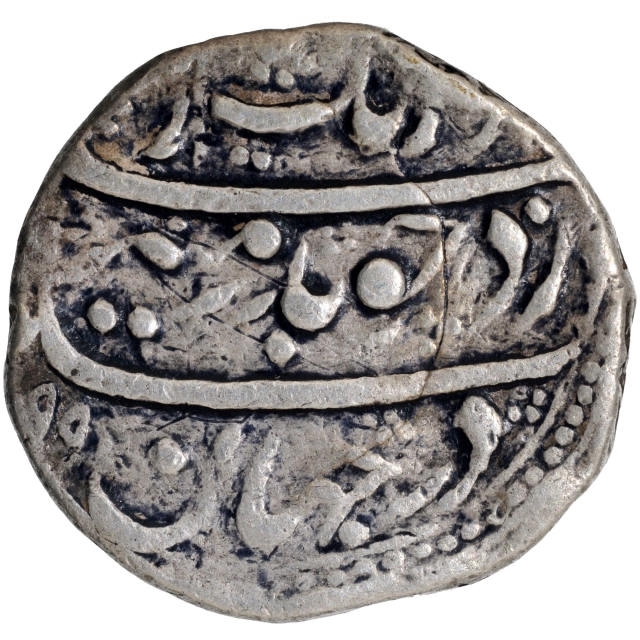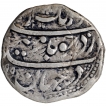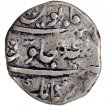This Lot is closed.
- P-Auction # 31
- Bids: 0
- Views:780
| Start Price 200000 | Estimated Price 200000-300000 |
| login, to view Hammer value | |
| Quick Description | ||||
|---|---|---|---|---|
| Denomination | Rupee 01 | Mint | Karnatak | |
| Metal | Silver | Year (AH/VS/SE/AM) | AH 1099 | |
| RY (Ruling Year) | 32 or 34 | |||
| Full Description: Aurangzeb Alamgir, Karnatak / Carnatic Mint, Silver Rupee, AH (10)99/32 or 34 RY, “Badr Munir” Couplet, Obv: Persian legends, "sikka zad dar jahan chu badre munir Shah Aurangzeb Alamgir” & “Hijri (10)99", Rev: Persian legend "sana julus, zarb Karnatak” completely visible at bottom, 11.4g, 22.52mm, (KM # 300.47), test marks, about very fine, Exceedingly Rare.
The Adil Shahi kingdom of Bijapur was one of the formidable sultanates of the Deccan and the Mughals could only capture the kingdom at the face of stiff resistance. It was only through the personal ability, determination and, to some extent, the stubbornness of Aurangzeb, who was then the commandeering prince at the head of the Mughal army, that Bijapur capitulated. These initial victories over the Adil Shahis did not mean suzerainty over the region as Ali II Adil Shah aggressively staked his claim to his father’s throne while continued incursions by the Nayakas and the Marathas posed grave difficulties to both sultans. Resistance from the Adil Shahis would not cease even after Ali’s death and his daughter Shahar Banu Begum’s marriage to Aurangzeb’s son, Mohammad Azam. Aurangzeb paid a costly price through these campaigns, as many major expeditions under the best of his generals failed and many of them like Amanullah Khan, Sayyed Fateh Ali Khan Barha, Fateh Mamur Khan, and others were killed. It took 18 months, from March 1685 to September 1686, with three months where the imperial forces came under the personal command of Aurangzeb that the young Sikander Adil Shah finally surrendered Bijapur Fort, thereby effectively bringing an end to the Adil Shahi dynasty. As the capital of Adil Shahi kingdom had come under Aurangzeb, the Khutbah was read and gold and silver coins were struck in the name of the Emperor at Bijapur. Later an Imperial Farman to the commanders of its adjoining territories was issued asking them to surrender their forts to imperial officers appointed to this purpose and then come and pay their respects to their new emperor. As no reply of submission would come, the Emperor ordered his generals to take possession of these territories by means of more campaigns. Ishwar Das Nagar writes that by November 1686, Qasim Khan, the Fauzdar of Sira, captured 20 forts that had earlier come under the Bijapur sultanate. Before 1686 the Mughal Deccan consisted of the four Subahs of Aurangabad (Khujista-Buniyad), Khandesh, Berar, Bidar (Mohammadabad), Bijapur (Dar-uz-Zafar), and Haidarabad (Farkhundah-Buniyad), all erstwhile centers of power under the former Deccan sultans. After the conquest of Bijapur and Golkonda, the extent of the Mughal empire reached up to Trichinopoly (Thirichirapalli) in the far south, in modern-day Tamil Nadu. The territory of ex-Adil Shahis kingdom was divided into three Subahs, the details are as under: Bijapur-18 Sarkars, Bidar - 6 Sarkars (except Nanded), Aurangabad (12 Sarkars). The Subah of Bijapur (18 Sarkars) was the second-largest Subah of the Deccan after Haidarabad (43 Sarkars). It was divided into two Subahs namely Bijapur and Bijapur Carnatic (Karnatak) respectively administered from Headquarters of Bijapur Haveli and Sira (in Tumkur District). Sira was made its headquarters of the sub-Subah of Bijapur called Bijapur Carnatic. The Mughals had established a mint at Sira and the coins minted here were known as Sirahi fanams. Several such coins have now come to light. Coins from this mint contains the legends "Alamgir Badshah" and “zarb sira” along with the date. It is opined that coins of Aurangzeb which contains the mint name Carnatic (Karnatak) were also minted at Sira as Sira was a prominent mint within the Subah of Bijapur. One of the rarest specimens from the coinage of Aurangzeb! (Reference: Masir-i-Alamgiri, Masir-ul- Umara and Karnataka-Bijapur (A new mint of Aurangzeb) by A.A. Kadiri)
| ||||


